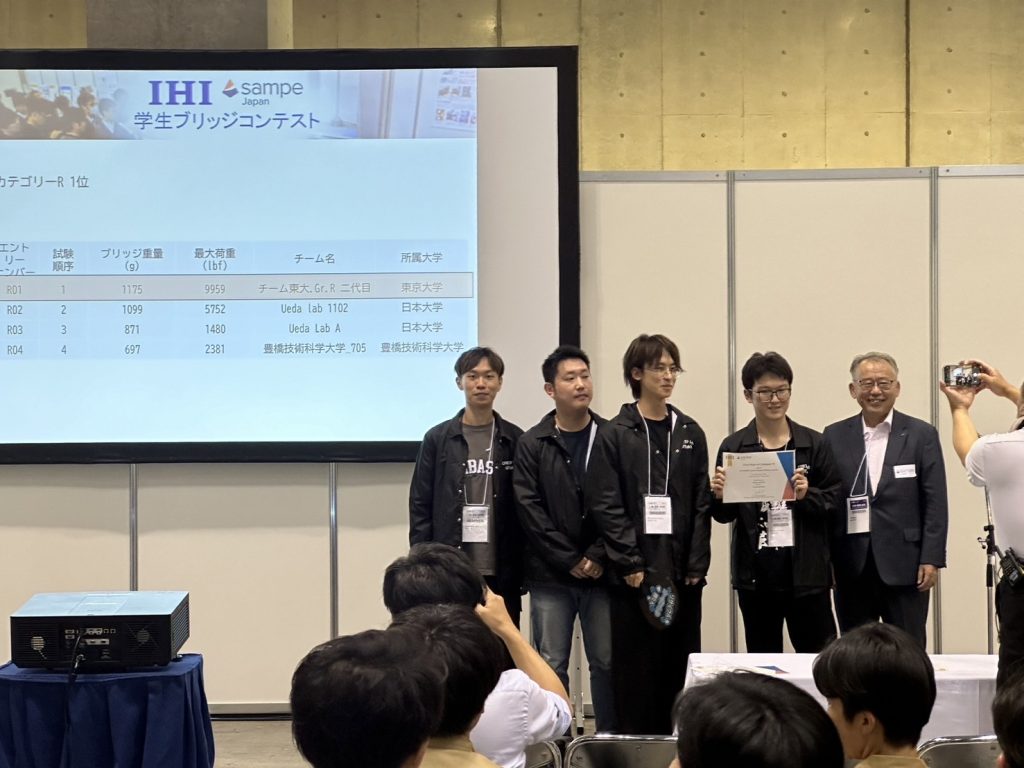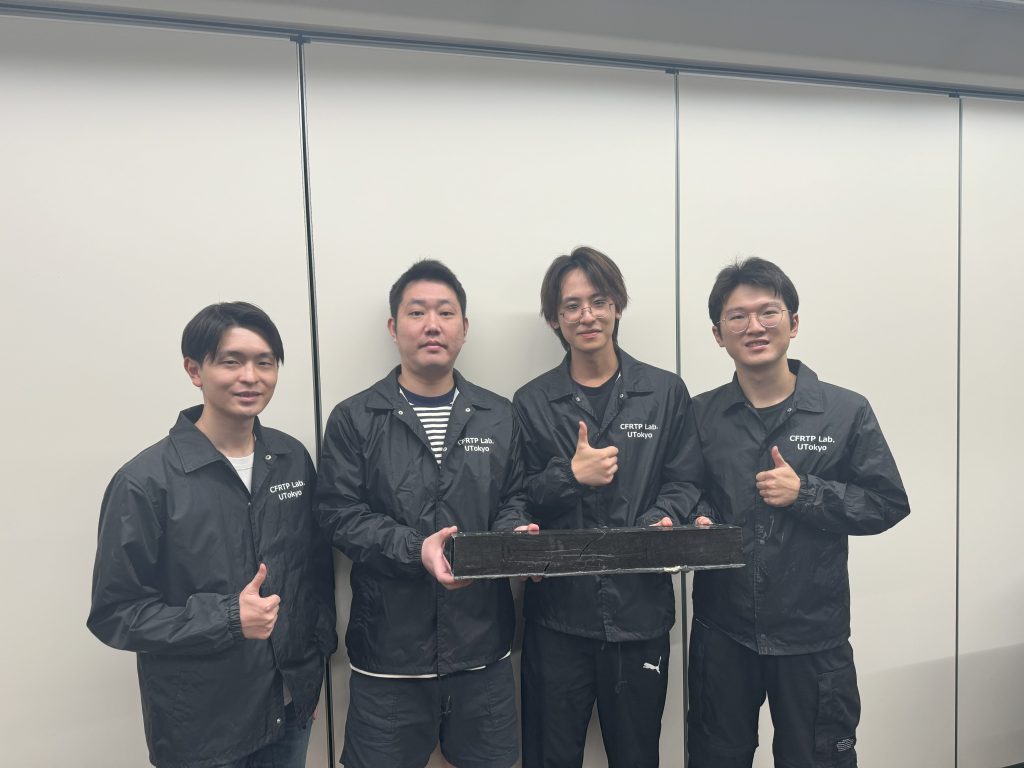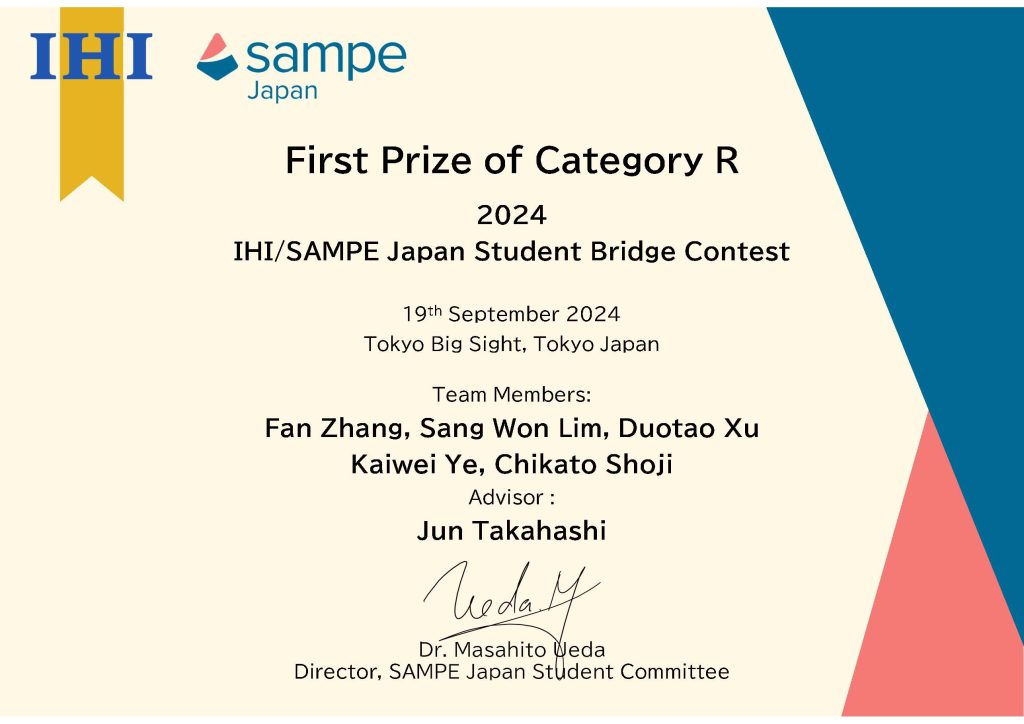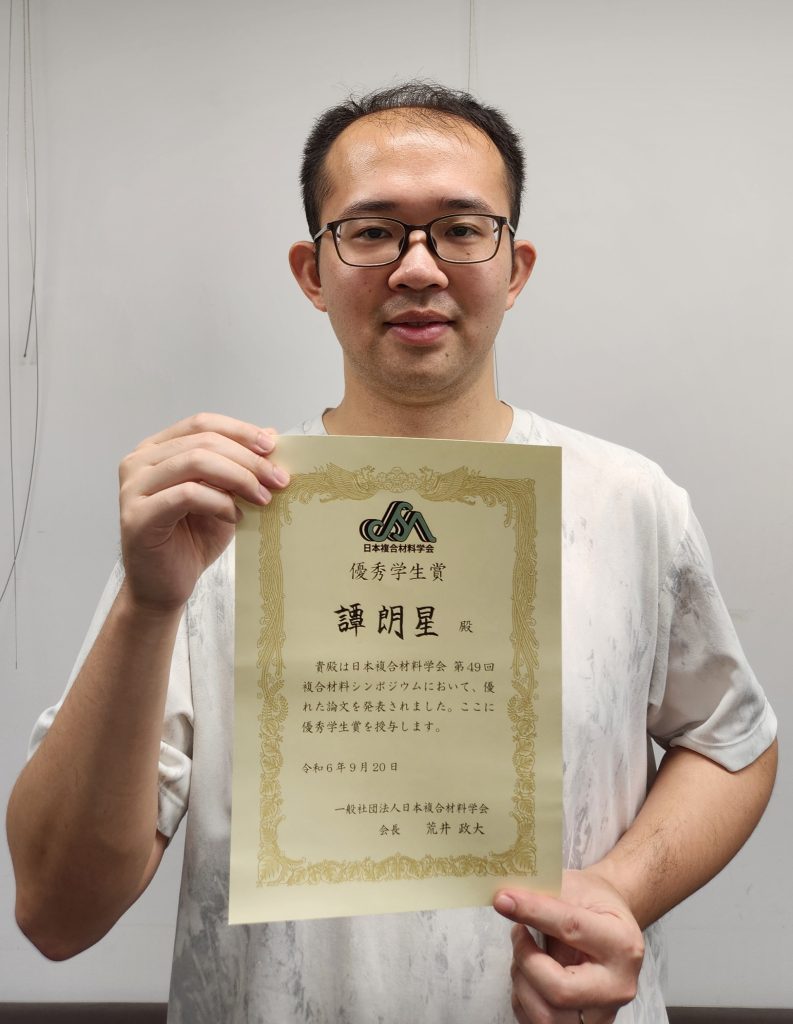Date of Award:2024.9.19
Name, Faculty/Graduate School, Department (Stream / Program) / Major: :Department of Systems Innovation, School of Engineering, Sang Won Lim (D1), Fan Zhang (M2), Kaiwei Ye (M1), Duotao Xu (M1), Jinto Shoji (B4)
Name of the award and a short explanation about the award:The SAMPE (The Society for the Advancement of Material and Process Engineering) Student Bridge Contest World Championship is an annual student competition that evaluates the lightweight performance of bridges made from fiber-reinforced composite materials, with around 100 teams participating. This time, we won first place in the Recycled Carbon Fiber Division (Category R) at the Japan preliminaries. The University of Tokyo team has achieved first place in this category for two consecutive years and has earned the right to participate in the world championship to be held in the USA next spring.
About awarded research:In the Bridge Contest, student teams from various universities design and fabricate bridges using fiber-reinforced composite materials, which are evaluated through a three-point bending test. The lightest bridge that surpasses a specified load wins the contest. The Recycled Carbon Fiber Division (Category R) is a new category established last year in response to the recent trend towards circularity. It requires the use of recycled carbon fiber nonwoven fabric provided by SAMPE Japan, with only the maximum external dimensions of the bridge specified. There are no restrictions on the resin or molding methods, making it a highly flexible category.
Awardee’s impression & future plan:We are truly honored to receive such an award. we would like to express my deep gratitude to everyone in the lab who provided various forms of support for this achievement. Building on last year’s experience, we further refined our recycled carbon fiber molding techniques and achieved results that exceeded expectations. The performance of the recycled carbon fiber bridge (9,981 lbf) suggests that it could surpass the Group G standard (10,000 lbf) when using virgin carbon fibers. As we approach the world championship in May 2025, we will continue to improve and aim to maximize the performance of recycled carbon fiber materials to create an even lighter and superior bridge, striving for top honors.













